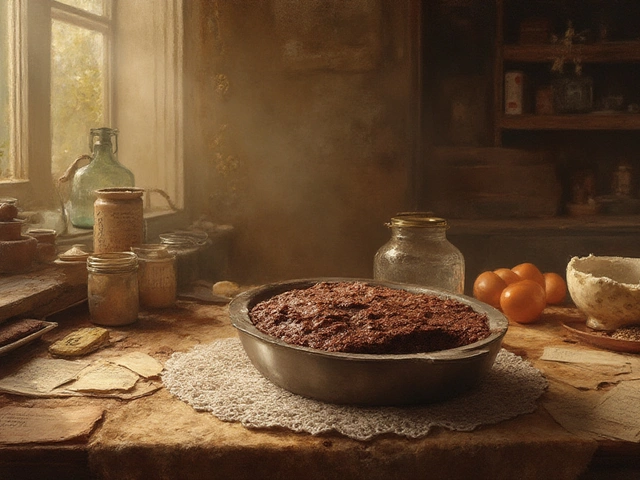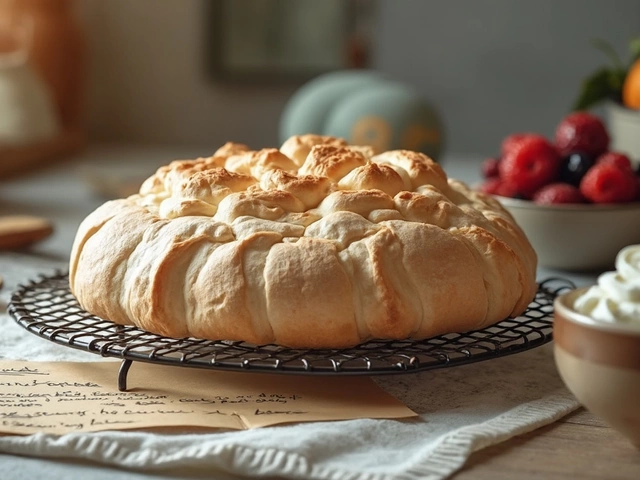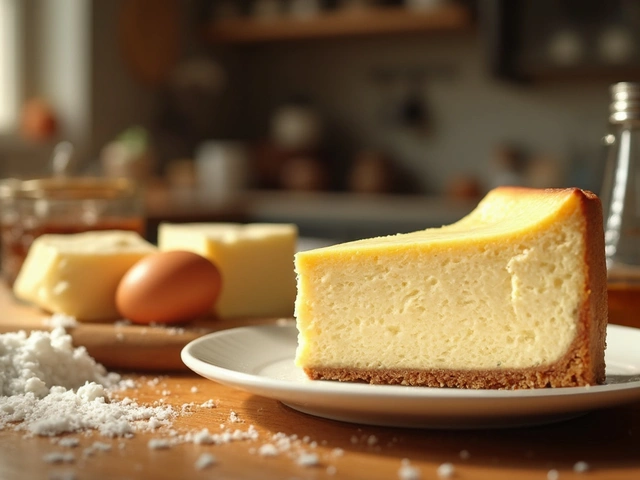
Choosing the right cheese for your cheesecake? It's like picking the perfect pair of shoes for an outfit. Before you grab just any cheese off the shelf, let’s chat about why your choice really matters. The cheese you choose can make or break the texture and flavor of your cheesecake.
Most folks immediately think of cream cheese for a classic New York cheesecake vibe—it's rich, smooth, and gives that dreamy, melt-in-your-mouth feel. But there's more out there if you're feeling adventurous. Have you ever tried ricotta? It's lighter and adds a bit of flair!
If you're anything like me, you might wonder if you can mix things up a bit. Combining cheeses can be the secret sauce to an incredible cheesecake. But how do you do it without it turning into a complete mess? Sometimes, a little guidance is just what you need to avoid those common pitfalls in the kitchen.
Stay tuned as we break down the cheese choices and share some top tips to get that perfect cheesecake consistency. No more guessing—just sweet, cheesy success!
Classic Cream Cheese
Alright, if we're talking cheesecakes, it’s tough not to bring up cream cheese. This is the classic go-to when aiming for that rich, smooth, and seriously indulgent taste. It's what gives your cheesecake that dreamy texture that's somewhere between silky and slightly firm.
Cream cheese first shot to fame in the U.S. in the early 1900s, thanks to companies like Philadelphia making it widely available and loved by all cheesecake enthusiasts. The main reason folks stick with cream cheese for cheesecakes is that it mixes smoothly with sugar and eggs, creating that signature creamy texture cheesecake lovers can't get enough of.
When you're picking cream cheese, full-fat is your best friend. It helps get that rich mouthfeel just right. Here's a quick tip: let the cream cheese sit at room temperature for a bit before mixing. It makes blending way easier, and let's be real, way less of a workout for your arms.
If you're after that classic New York style, you'll definitely want to stick with it. But remember, not all cream cheese is created equal. You might find some that are a bit more pricey, branded as 'gourmet', but the basic stuff from your grocery store usually does the job just fine.
Here's a little cheese math for you—a standard cheesecake recipe usually calls for around two pounds of cream cheese. That’s about four 8-ounce packages, just in case you’re doing a quick grocery run and need to make sure you don’t end up with too little of the good stuff. So there you go: if you’re aiming for the traditional flavor, you know which cheese should be in your shopping cart.
Exploring Ricotta
Diving into the world of ricotta might just be the best decision if you're after a lighter, fluffier cheesecake. Unlike the heavy, dense texture of cream cheese, ricotta offers a creamy but airy alternative that can transform your dessert.
Originating from Italy, ricotta has a mild and slightly sweet taste that blends seamlessly with other ingredients, making it a versatile choice for various recipes. It's made from leftover whey from cheese production, giving it a unique texture that can add a fresh twist to your cheesecake.
Wondering if ricotta can hold its own in a cheesecake recipe? Absolutely yes! It's not just about the texture. Ricotta brings in a subtle flavor depth, perfect for those who want a cheesecake that's not overwhelmed with richness.
Now, let's chat about what to look for when buying ricotta for your cheesecake. Always go for a high-quality, fresh ricotta to ensure the best taste and consistency. Avoid ricotta with added stabilizers or fillers—these can weigh down your cheesecake and mess with the overall texture.
Here's a fun idea: try blending ricotta with cream cheese to balance fluffiness with creaminess. Many home bakers find this combo gives the perfect mix of textures, and the taste is just divine.
Curious about how ricotta stacks up in terms of nutrition? Check out this simple comparison:
| Cheese | Calories per 100g | Fat Content |
|---|---|---|
| Ricotta | 150 | 10g |
| Cream Cheese | 350 | 34g |
As you can see, ricotta wins for a lower-calorie option without sacrificing the flavor. So, next time you're at the store and considering your cheesecake cheese options, don't overlook ricotta. It's the underdog that might just become your favorite!

Blending Cheeses
Alright, let's talk combining cheeses for your cheesecake—not all heroes wear capes, and not all cheesecakes run on cream cheese alone! Mixing cheeses can lead to a really interesting depth of flavor and texture. Think of blending cheeses like crafting a beautiful harmony using different instruments. A good mix can really elevate your cheesecake’s taste and make it stand out.
A popular pairing is cream cheese with ricotta. Cream cheese gives you that solid, creamy base, while ricotta adds a light and airy touch. This blend often results in a cheesecake that's rich but not too heavy. If you’ve ever felt a cheesecake was too dense, this combo might be the fix you need.
If you're aiming for something tangier, try adding a bit of mascarpone. It's richer than ricotta but less tangy than cream cheese. This can balance out the sweetness of your recipe beautifully. Imagine biting into a cheesecake that’s got a bit of zing but still melts in your mouth. Sounds dreamy, right?
Here are a few tips when blending cheeses:
- Experiment with ratios: Start with a basic 50/50 blend and adjust from there based on taste preferences.
- Temperature matters: Use cheeses at room temperature to make mixing easier and ensure a smoother batter.
- Don’t overmix: Blending is essential, but overmixing can introduce air, resulting in a cracked cheesecake.
And don't forget to taste test. You want your cheesecake to have the balanced flavor and texture you love. Who knows, your perfect blend might just impress even the toughest cheesecake critics in your life!
Tips for Perfect Texture
Getting the texture just right in your cheesecake is like hitting the bullseye—satisfying and totally worth it. Here’s how to achieve that silky, smooth texture every time!
First things first, make sure your cream cheese or any cheese you're using is at room temperature before you start mixing. Cold cheese can leave lumps in your batter, and no one wants a lumpy cheesecake! Let it sit out for about an hour.
Next, don’t rush the mixing. Beat your cheese until it's creamy, then gradually add other ingredients. If you dump everything in at once, you might end up over-mixing, and that leads to a dense cake.
Here's a cool tip: To avoid cracks on the surface, bake your cheesecake in a water bath. It sounds fancy, but it’s simple. Place your cheesecake pan inside a larger pan filled with a bit of water. This keeps the baking gentle and even.
- Preheat your oven properly. Cheesecakes don't like sudden temperature changes.
- Let your cheesecake cool gradually. Cracking often happens when cooling too quickly.
If you're using something like ricotta, make sure to drain it well. Too much moisture can mess up the consistency.
Wanna go pro? Invest in a springform pan—it makes removing your cheesecake a piece of cake, literally! You don’t want all your hard work to crumble at the last minute.
Finally, resist the urge to cut right in as soon as it’s out of the oven. Cheesecake needs time to set properly, preferably overnight in the fridge.
Follow these simple pointers, and you’ll be on your way to cheesecake greatness! Happy baking!





